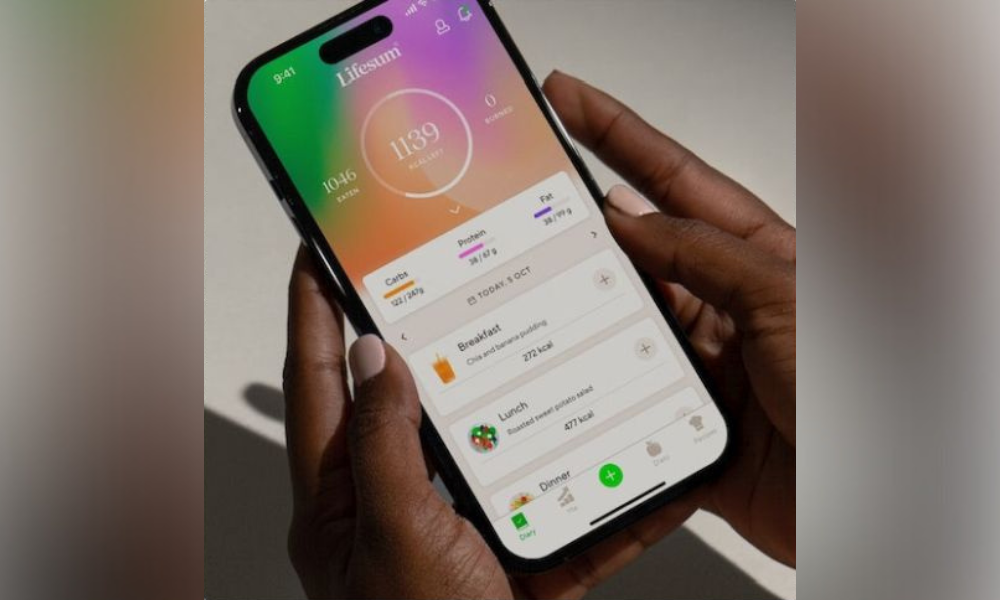Employees are becoming more proactive in managing their health and well-being but how can plan sponsors help them?

A longer-living population, the emergence of holistic health, a better understanding of how nutrition impacts workplace outcomes, and transformative artificial intelligence (AI). These are the key drivers that will revolutionize workplace well-being in 2024, says research from Lifesum, a global healthy eating app used by organizations, including Google and Amazon, to improve employee well-being.
AI promises to dramatically change the way we view employee health, says Wesleigh Roeca, director of workplace well-being at Lifesum. “And, just as powerful will be the changes that are being made to shift the focus from reactive to preventive care in the hope of limiting an aging work population from becoming an overwhelming burden on healthcare systems.”
Lifesum research’s top workplace well-being trends include:
1. Holistic Health & Preventative Health
2024 will see a major strategic shift from reactive to proactive employee wellness approaches. Holistic health and preventative health will take greater priority as employers realize the benefit of a proactive ‘whole person’ approach to health and wellness, i.e., how an individual’s health is impacted by factors, including sleep, mental health, and nutrition. Employers will follow suit with appropriate programs that view health as an investment for increased ‘healthspan’ rather than health as an expense. This ‘prevention is better than cure’ adage covers many themes, including nutrition and fitness. Research shows that it can create long-term benefits for employees, as well as reducing costs associated with treating preventable conditions. Advances in AI will play a major role, enabling employees to spot early warning signs and implement rapid response.
2. Longevity & Functional Health
Longevity and functional health of employees will take greater precedence. In 2024, the rise of direct-to-consumer blood testing will help employers to understand the value of establishing baseline health status and tracking this over time. Employees will receive direct access to their full-spectrum lab results that provide deep insights into their hormonal levels and micro/macro-nutrients. This will empower employees to understand their personalized health journey from a holistic perspective and enable them to make better lifestyle choices for increased ‘’healthspan’ and improved workplace well-being outcomes.
3. Hormonal Health
In 2024, hormonal health will be recognized as an issue for all employees, not just women. Hormones regulate every process in the body, including stress, mental health, and productivity. The rise of direct-to-consumer blood testing will provide employees with deep insights into their hormonal levels and micro/macro-nutrients. Practical workplace intervention, such as Lifesum’s Hormonal Health Meal Plan, will innovate the next phase of workplace hormonal health by offering all employees personalized health insights, guidance and support, recipes, and feedback on micro and macro nutrients that naturally support the body in balancing hormones that lead to a healthier, more productive workers.
4. Mental Health
Mental health support will take greater priority among employers in 2024. Mental health awareness is continuing to be a key focus area for well-being programs and consistently rated as a top priority for Gen Z and Millennials. There is also increasing recognition for how nutrition and gut health plays into mental health and resilience.
5. Nutrition and Work Performance
In 2024, employers are poised to attain a comprehensive understanding of how nutrition significantly influences workplace outcomes, including enhanced engagement, retention, productivity, performance, and profitability. The intricate interplay between dietary habits, encompassing factors such as sleep quality, hormonal health, and brain function, directly shapes overall presence and effectiveness in the professional setting. And there’s a reason this matters so much. In Lifesum’s latest study, nearly half of Gen Z and Millennials (48 percent) say they would quit their job tomorrow for one that better supported their well-being.

“When employees prioritize their employees’ holistic well-being, addressing both mental and physical health needs, workers are better equipped to perform at their best, both within and outside the workplace.,” say Roeca. “This comprehensive self-care leads to more fulfilling lives, improved sleep quality, and healthier dietary habits, resulting in better overall health outcomes. For employers, this translates into a more engaged workforce, a decrease in employee turnover, and the cultivation of a workplace culture centered around well-being.”
Roeca says that as employers offer more benefits that are truly for the best interest and well-being of employees, employees become more receptive to take part in these personal well-being programs.
“As the wellness industry evolves, there's a noticeable increase in the popularity of affordable, direct-to-consumer biometric screenings and other services, such as blood testing, to offer real-time health insights,” he says. “Employees are becoming more proactive in managing their health and well-being, prompting employers to adopt similar approaches. Many of the world’s leading organizations, including Amazon, Google, GE, and PayPal, now offer access to specialized programs like Lifesum for Work to empower individuals to gain insights into their unique health needs. This fosters a culture of understanding and enabling healthier lifestyles.”
Roeca also says that employee uptake of these types of programs is on the rise, as demonstrated by his company’s healthy eating app.
“Lifesum is championing a universal benchmark for defining a 'good' corporate well-being program uptake, which recognizes the seismic shifts in workplace behaviour and culture in recent years. At Lifesum for Work, we typically aim for a minimum of 30 percent employee participation. This percentage can vary based on factors such as company size, industry, and the specific goals of the organization. Tailoring the target participation rate to align with an organization's unique objectives ensures a more meaningful measure of program success.



